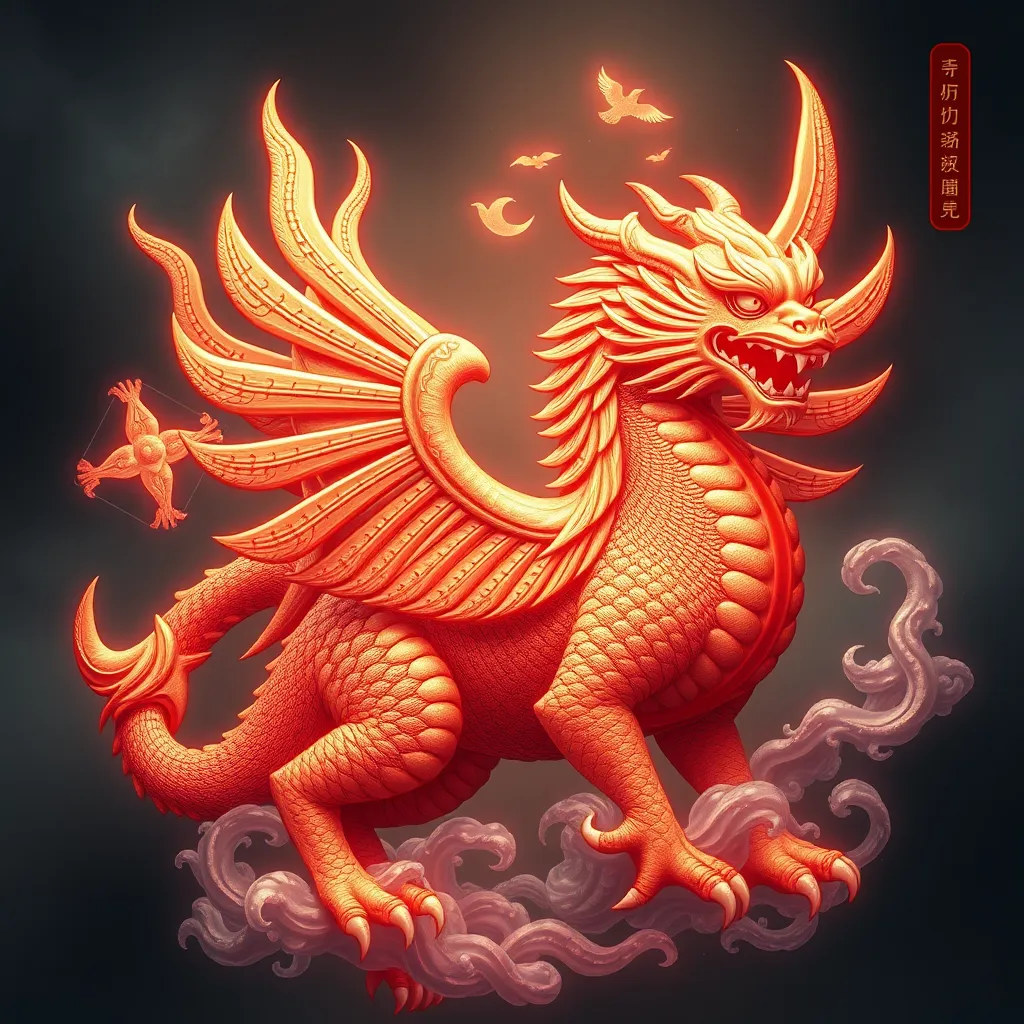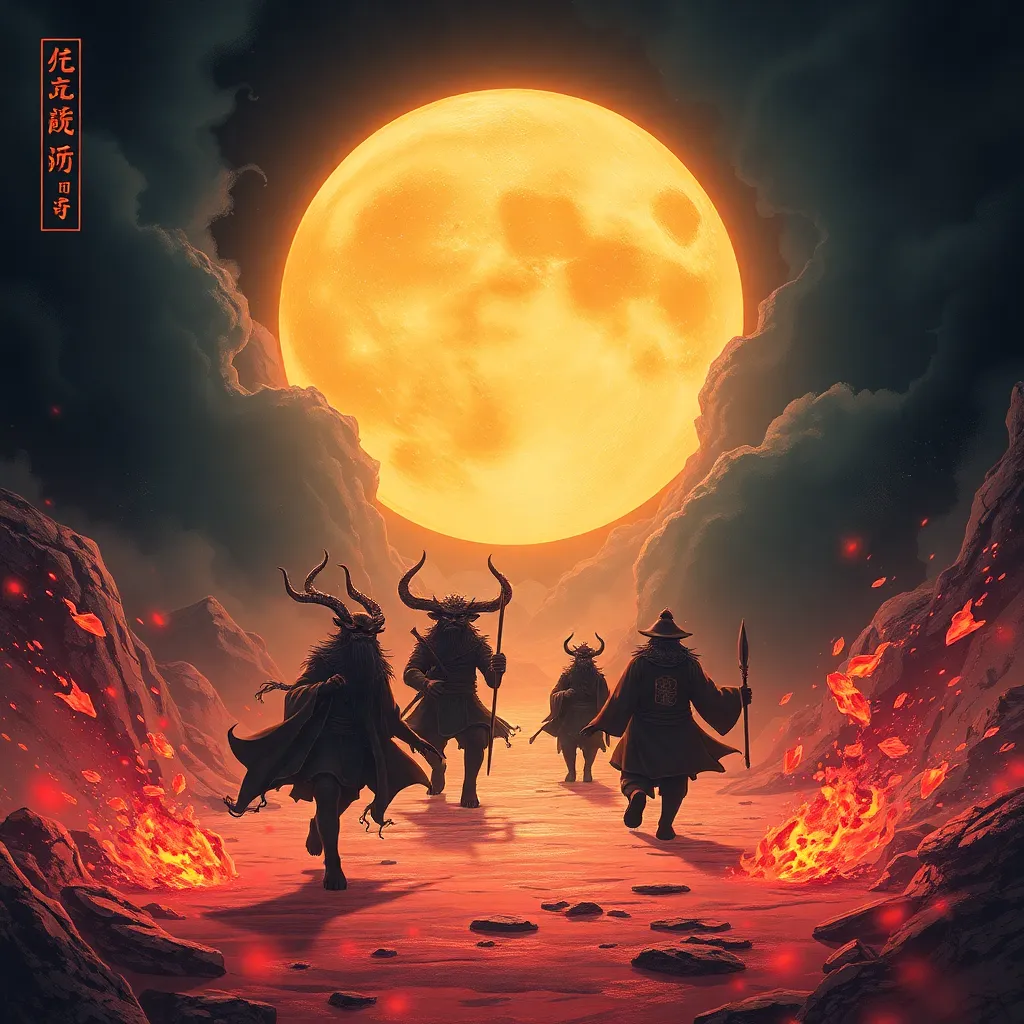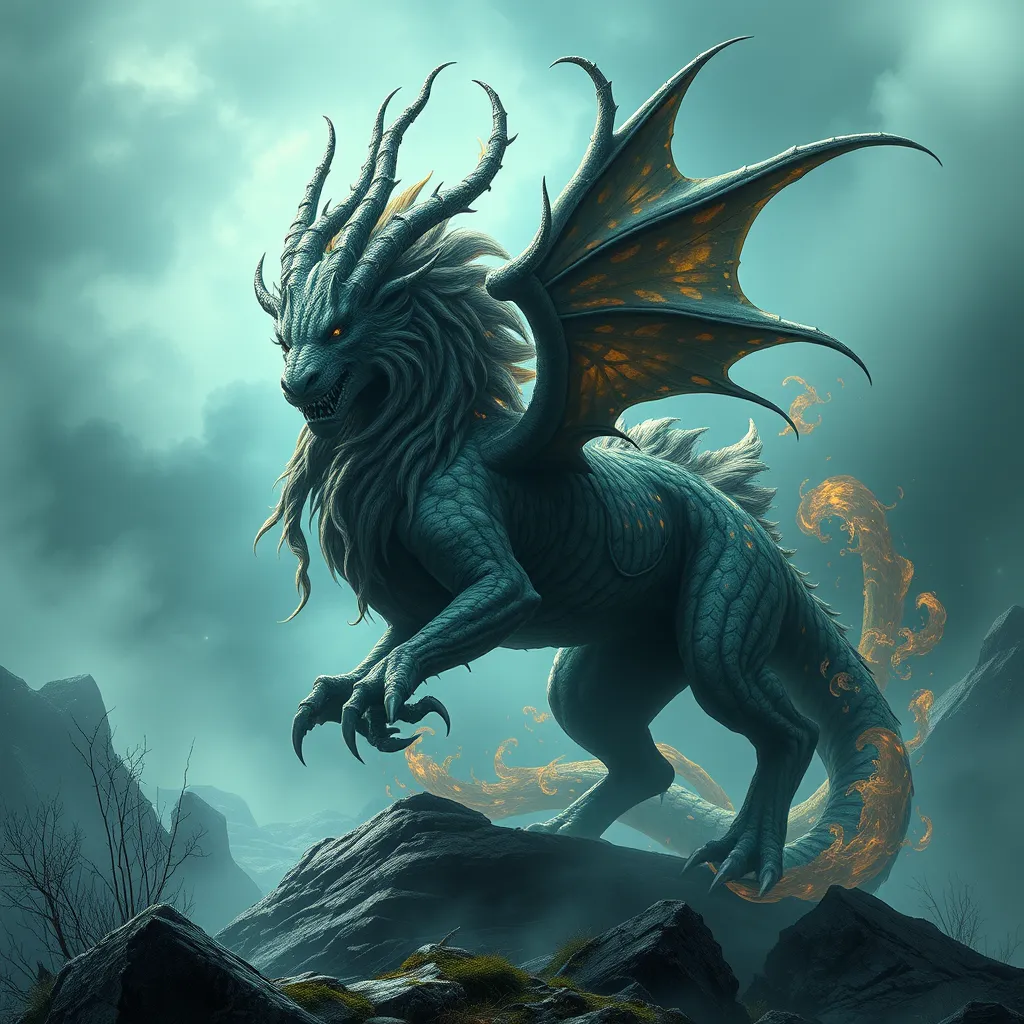The Griffin as a Symbol of Power and Protection in Chinese Culture
I. Introduction
The Griffin, a mythical creature with the body of a lion and the head and wings of an eagle, has captivated the imagination of cultures around the world. Its origins can be traced back to ancient civilizations such as the Greeks and Egyptians, where it was often depicted as a guardian of treasures and a figure of strength. In this article, we will explore the significance of the Griffin within the context of Chinese culture, examining its historical roots, symbolic meanings, and artistic representations.
Symbols play a crucial role in cultural contexts, serving as representations of values, beliefs, and societal norms. The Griffin, with its dual nature, embodies a complex interplay of power and protection, making it a fitting subject for exploration in Chinese mythology and art.
II. Historical Context of the Griffin in Chinese Mythology
Early depictions of the Griffin in Chinese texts can be somewhat elusive, as the creature is more commonly associated with Western mythology. However, through cultural exchanges along the Silk Road, the idea of the Griffin began to permeate Chinese folklore. Ancient texts such as the “Shan Hai Jing” (Classic of Mountains and Seas) contain references to hybrid creatures that share similarities with the Griffin.
The influence of neighboring cultures, particularly through trade and conquest, shaped the Chinese interpretation of the Griffin. For instance, the Persian and Central Asian representations of griffins as protectors of the divine and guardians of the underworld had a significant impact.
In Chinese mythology, the Griffin is often depicted as a powerful guardian, a role that aligns with its portrayal in other cultures. The creature signifies not only power but also wisdom and protection, making it a revered figure in various folklore traditions.
III. The Griffin’s Symbolic Meanings
The Griffin embodies multiple meanings in Chinese culture, primarily revolving around the concepts of power and protection.
A. Power: The Griffin as a representation of strength and authority
The Griffin is often viewed as a symbol of royal power and authority. Its majestic presence evokes a sense of strength, making it a fitting emblem for emperors and leaders. In Chinese art, representations of the Griffin are sometimes used in conjunction with dragons, another powerful symbol, to signify the ultimate authority and imperial strength.
B. Protection: The Griffin’s role as a guardian figure
In addition to its representation of power, the Griffin is also seen as a guardian figure. It is believed to protect sacred spaces, treasures, and the people from harm. This protective aspect is crucial in various cultural practices, where the Griffin is invoked for safety and security.
C. The duality of the Griffin as a symbol of both benevolence and ferocity
The dual nature of the Griffin is significant in understanding its role in Chinese culture. It embodies both benevolence and ferocity, acting as a protector while also being a formidable force against evil. This duality is reflected in stories and legends where the Griffin comes to the aid of heroes or punishes wrongdoers.
IV. Artistic Representations of the Griffin
The Griffin has been depicted in various forms of traditional Chinese art, showcasing its importance in cultural narratives.
A. Traditional Chinese art featuring the Griffin
In traditional paintings and sculptures, the Griffin is often portrayed alongside dragons, phoenixes, and other mythical creatures. These artworks emphasize the creature’s majestic attributes and its role as a protector.
B. Modern interpretations and adaptations in contemporary art
In contemporary Chinese art, the Griffin has seen a resurgence, often adapted in modern styles that blend traditional techniques with innovative concepts. Artists explore the symbolism of the Griffin in new ways, infusing it with contemporary relevance.
C. The Griffin in architecture and its significance in public spaces
The Griffin is also a prominent feature in Chinese architecture, especially in temples and palaces. Statues and motifs of the Griffin can be found in public spaces, symbolizing protection and strength, while also serving as decorative elements that attract visitors.
V. The Griffin in Chinese Festivals and Rituals
The role of the Griffin extends into various cultural practices, particularly in festivals and rituals.
A. The role of the Griffin in traditional celebrations
During traditional celebrations, the Griffin is often invoked as a symbol of good fortune and protection. Its image is featured in decorations and performances, reinforcing its significance in community festivities.
B. Use of Griffin imagery in rituals for protection and prosperity
In rituals aimed at ensuring protection and prosperity, the Griffin often symbolizes the hope for a safe and bountiful future. Offerings and prayers may include imagery of the Griffin to invoke its blessings.
C. Examples of specific festivals that honor the Griffin
- Lantern Festival: The Griffin is sometimes depicted in lantern designs, symbolizing the hope for guidance and safety.
- Spring Festival: Decorations featuring the Griffin are used to attract good fortune as families celebrate the new year.
VI. Comparative Analysis: The Griffin in Other Cultures
Examining the Griffin across cultures reveals intriguing similarities and differences.
A. Similarities and differences in the representation of the Griffin across cultures
While the Griffin is primarily associated with Western mythology, its role as a protector and symbol of authority is echoed in Chinese culture. However, the specific attributes and stories surrounding the Griffin can vary significantly.
B. The Griffin’s place in Western mythology versus Chinese mythology
In Western mythology, the Griffin is often portrayed as a guardian of the divine and a symbol of vigilance. In contrast, Chinese interpretations emphasize its dual nature of benevolence and ferocity, reflecting a broader spectrum of meaning.
C. Cross-cultural influences and exchanges involving the Griffin
Cross-cultural exchanges have contributed to the evolving narrative of the Griffin. As cultures interacted, the attributes of the Griffin were adapted, showcasing the fluidity of mythological symbols.
VII. Modern Interpretations and Popular Culture
The Griffin has found its place in contemporary Chinese media and literature, evolving with modern themes.
A. The Griffin in contemporary Chinese media and literature
In recent years, the Griffin has been featured in films, books, and television series, often reimagined to resonate with contemporary audiences. These portrayals tend to amplify its protective qualities and its role in heroic narratives.
B. Its resurgence in popular culture and its implications
The resurgence of the Griffin in popular culture reflects a renewed interest in traditional symbols and their meanings. This revival has implications for cultural identity, as younger generations seek to connect with their heritage.
C. The Griffin as a symbol in modern Chinese identity
As a symbol of power and protection, the Griffin has become integral to modern Chinese identity, representing a blend of historical significance and contemporary relevance in a rapidly changing world.
VIII. Conclusion
In summary, the Griffin holds a unique and multifaceted position in Chinese culture, representing power, protection, and the duality of nature. Its significance spans historical contexts, artistic representations, and contemporary interpretations, illustrating its enduring legacy. As cultural explorations continue, the Griffin remains a vital symbol for understanding the complexities of identity and heritage in China.
Future research may delve deeper into the evolving perceptions of the Griffin, exploring its role in modern society and its potential as a unifying symbol across cultures.



